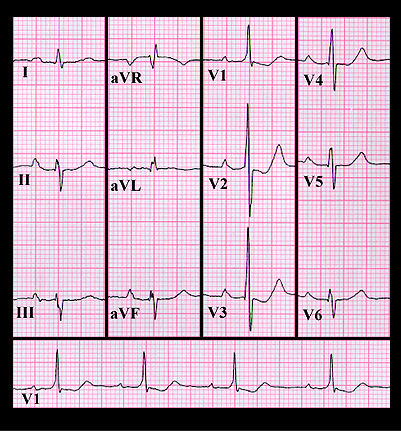
The ECG shown here is from a 54 year old slightly cyanotic woman with a soft, grade 2/6 systolic murmur at the left sternal border. Her ECG shows left axis deviation, but the tall R wave and diminutive S wave in V1 and the S wave in V6 which is of greater amplitude than the R wave are indications of the right ventricular hypertrophy. This finding, in association with the soft murmur and the cyanosis suggests a ventricular septal defect with pulmonary hypertension and a balanced or bi-directional shunt (i.e. right to left as well as left to right). This is referred to as Eisenminger’s physiology. At cardiac catheterization, she was found to have a large ventricular septal defect with pulmonary hypertension, equalization of her right and left ventricular systolic pressures and a bi-directional shunt.
